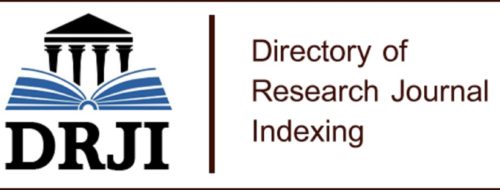Elasticity of substitution between labor, capital and energy in turkey: Translog production function approach
Öz
In addition to the
traditional production factors, one of the most needed production input in the
production process is energy. In particular, it is rather high the use of
traditional or primary energy sources in the production process. The aim of
this study is to predict the translog production function including energy
consumption for Turkey. For the analysis, it was utilized GDP, labor, capital,
natural gas, oil and coal data for 1982-2014 period. The prediction was made by
the Ridge Regression method. Findings show that the elasticity of substitution
between inputs is distributed at 1 level. Elasticities of output followed a positive
course throughout the period covered.
Anahtar Kelimeler
Energy Capital Labour Translog Production Function Ridge Regression
Kaynakça
- AKTAŞ, Cengiz ve Veysel YILMAZ; (2008), “Türkiye’de Petrol Tüketimi ve Ekonomik Büyüme Arasındaki Nedensellik İlişkisi”, Kocaeli Üniversitesi Sosyal Bilimler Enstitüsü Dergisi, 15, ss. 45-55.
- BROCKWAY, Paul, E.; Harry SAUNDERS; Matthew K. HEUN; Timothy J. FOXON; Julia K. STEINBERGER; John R. BARRETT and Steve SORRELL; (2017), “Energy Rebound as a Potential Threat to a Low-Carbon Future: Findings from a New Exergy-Based National-Level Rebound Approach”. Energies, 10(1), ss. 1-24.
- CASSELS, John, M.; (1951), “On the Law of Variable Proportions”, İnternet Adresi: http://cas2.umkc.edu/ECON/economics/faculty/Lee/courses/502/reading/tp3.pdf , Erişim Tarihi: 09.11.2018.
- ÇERMİKLİ, A. Hakan ve İbrahim TOKATLIOĞLU; (2015), “Yüksek ve Orta Gelirli Ülkelerde Teknolojik Gelişmenin Enerji Yoğunluğu Üzerindeki Etkisi”, Mustafa Kemal Üniversitesi Sosyal Bilimler Enstitüsü Dergisi, 12(32), ss. 1-22.
- CHRISTENSEN, Laurits, R.; Jorgenson W. DALE and Lau J. LAWRENCE; (1973), “Transcendental Logarithmic Production Frontiers”, The Review of Economics and Statistics, 55(1), pp. 28-45.
- FANG, Yiping; (2011), “Economic Welfare Impacts from Renewable Energy Consumption: The China Experience”, Renewable and Sustainable Energy Reviews, 15(9), pp. 5120-5128.
- FERGUSON, Carl, E.; (1971), The Neoclassical Theory of Production and Distribution, Cambridge: Cambridge University Press.
- FRISCH, Ragnar: (1965), The Theory of Production, Dordrecht: D. Reidel Publishing Co.
- HEPEKTAN, Erdem ve Yasin SERTKAYA; (2016), “Türkiye’de Elektrik Tüketimi, Kişi Başına GSYİH, CO2 Emisyonu ve Petrol Tüketimi İlişkisi”, Yalova Üniversitesi Sosyal Bilimler Dergisi, 6(12), ss. 163-182.
- HOCH, Irving; (1955), “Report of the Montreal Meeting, September 10-13, 1954”, Econometrica, 23(3), pp. 324-337.
- HOERL, Arthur E. and Robert W. KENNARD; (1970), “Ridge Regression: Biased Estimation for Nonorthogonal Problems”, Technometrics, 12(1), pp. 55-67.
- KOESLER, Simon and Michael SCHYMURA; (2012), “Substitution Elasticities in a CES Production Framework An Empirical Analysis on the Basis of Non-Linear Least Squares Estimation”, Centre for European Economic Research, 12-007, Internet Adress: https://papers.ssrn.com/sol3/papers.cfm?abstract_id=2014655, Date of Access: 25.11.2018.
- LIN, Boqiang and Izhar AHMAD; (2016a), “Technical Change, Inter-Factor and Inter-Fuel Substitution Possibilities in Pakistan: A Trans-log Production Function Approach”, Journal of Cleaner Production, 126, pp. 537-549.
- LIN, Boqiang and Izhar AHMAD; (2016b), “Energy Substitution Effect on Transport Sector of Pakistan Based on Trans-Log Production Function”, Renewable and Sustainable Energy Reviews, 56, pp. 1182-1193.
- LIN, Boqiang and Philip ATSAGLI; (2017), “Inter-Fuel Substitution Possibilities in South Africa: A Translog Production Function Approach”, Energy, 121, pp. 822-831.
- LIN, Boqiang; Philip ATSAGLI and Kingsley E. DOGAH; (2016), “Ghanaian Energy Economy: Inter-Production Factors and Energy Substitution”, Renewable and Sustainable Energy Reviews, 57, pp. 1260-1269.
- LIN, Boqiang and Chunping XIE; (2014), “Energy Substitution Effect on Transport Industry of China-Based on Trans-log Production Function”, Energy, 67, pp. 213-222.
- MARSCHAK, Jacop and William H. ANDREWS; (1944), “Random Simultaneous Equations and the Theory of Production”, Econometrica, 12(3/4), pp. 143-205.
- MUNDLAK, Yair; (1961), “Empirical Production Function Free of Management Bias”, Journal of Farm Economics, 43(1), pp. 44-56.
- ÖZATA, Erkan; (2010), “Türkiye’de Enerji Tüketimi ve Ekonomik Büyüme Arasındaki İlişkilerin Ekonometrik İncelemesi”, Dumlupınar Üniversitesi Sosyal Bilimler Dergisi, 26, ss. 104-114.
- PINDYCK, Robert S.; (1979), “Interfuel Substitution and the Industrial Demand for Energy: An International Comparison”, The Review of Economics and Statistics, 61(2), pp. 169-179.
- POLLAK, Robert A.; Robin C. SICKLES and Terence, J. WALES; (1984), “The CES-Translog: Specification and Estimation of a New Cost Function”, The Review of Economics and Statistics, 66(4), pp. 602-607.
- SARI, Ramazan and Uğur SOYTAŞ; (2007), “The Growth of Income and Energy Consumption in Six Developing Countries”, Energy Policy, 35(2), pp. 889-898.
- SHEN, Keting and John WHALLEY; (2013), “Capital-Labor-Energy Substitution in Nested CES Production Functions for China”, National Bureau of Economic Research w19104, Internet Adress: https://www.nber.org/papers/w19104, Date of Access: 25.11.2018.
- SMYTH, Russell; Paresh Kumar NARAYAN and Hong Liang SHI; (2011), “Substitution Between Energy and Classical Factor Inputs in the Chinese Steel Sector”, Applied Energy, 88(1), pp. 361-367.
- SONGUR, Mehmet; (2017), “Türkiye’de Beşeri Sermaye ve Fiziksel Sermaye Arasındaki İkame Olanakları: Translog Üretim Fonksiyonu Yaklaşımı”, Çankırı Karatekin Üniversitesi İİBF Dergisi, 7(2), ss. 201-224.
- SONGUR, Mehmet; (2018), “Gelişmiş ve Gelişmekte Olan Ülkelerde Faktörler Arası İkame Esneklik Katsayısı: Cobb-Douglas, CES ve VES Üretim Fonksiyonu Tahmini”, Yayınlanmamış Doktora Tezi, Ankara: Gazi Üniversitesi Sosyal Bilimler Enstitüsü.
- SONGUR, Mehmet; Yusuf MURATOĞLU ve Devran ŞANLI; (2018), “Türkiye’de Ekonomik Büyüme ile Enerji Tüketimi Arasındaki Nedensellik İlişkisi: Frekans Alanı Yaklaşımı”, in Ayşe CEBECİ; Erika TORRES and H. Gülçin BEKEN (Ed.), Current Debates in Economics Volume 18, London: IJOPEC Publication Limited, ss. 207-222.
- SOYTAŞ, Uğur and Ramazan SARI; (2007), “The Relationship Between Energy and Production: Evidence from Turkish Manufacturing Industry”, Energy Economics, 29(6), pp. 1151-1165.
- WERF, Van der E.; (2008), “Production Functions for Climate Policy Modeling: An Empirical Analysis”, Energy Economics, 30(6), pp. 2964-2979.
- WESSEH, Presley K. Jr.; Boqiang LIN and Michael Owusu APPIAH; (2013), “Delving into Liberia's Energy Economy: Technical Change, Inter-Factor and Inter-Fuel Substitution”, Renewable and Sustainable Energy Reviews, 24, pp. 122-130.
- YAPRAKLI, Sevda ve Z. Çağlar YURTTANÇIKMAZ; (2012), “Elektrik Tüketimi ile Ekonomik Büyüme Arasındaki Nedensellik: Türkiye Üzerine Ekonometrik Bir Analiz”, CÜ İktisadi ve İdari Bilimler Dergisi, 13(2), ss. 195-215.
- ZELLNER, Arnold, Jan KMENTA and Jacques DREZE; (1966), “Specification and Estimation of Cobb-Douglas Production Function Models”, Econometrica, 34(4), pp. 784-795.
Öz
Geleneksel üretim
faktörlerinin yanı sıra üretim sürecinde en fazla ihtiyaç duyulan üretim
girdilerinden birisi de enerjidir. Özellikle geleneksel ya da birincil enerji
kaynaklarının üretim süreçlerinde kullanımı oldukça yoğundur. Bu çalışmanın
amacı, enerji tüketimini içeren Translog Üretim Fonksiyonu’nu Türkiye için
tahmin etmektir. Çalışmada 1982-2014 dönemine ait GSYH, emek, sermaye,
doğalgaz, petrol ve kömür verilerinden yararlanılmıştır. Söz konusu tahmin
Ridge Regresyon yöntemi ile gerçekleştirilmiştir. Elde edilen bulgular,
girdiler arası ikame esnekliklerinin 1 düzeyinde dağıldığını göstermektedir.
Çıktı esneklikleri ise, ele alınan dönem boyunca pozitif seyir izlemiştir.
Anahtar Kelimeler
Enerji Sermaye Emek Translog Üretim Fonksiyonu Ridge Regresyon
Kaynakça
- AKTAŞ, Cengiz ve Veysel YILMAZ; (2008), “Türkiye’de Petrol Tüketimi ve Ekonomik Büyüme Arasındaki Nedensellik İlişkisi”, Kocaeli Üniversitesi Sosyal Bilimler Enstitüsü Dergisi, 15, ss. 45-55.
- BROCKWAY, Paul, E.; Harry SAUNDERS; Matthew K. HEUN; Timothy J. FOXON; Julia K. STEINBERGER; John R. BARRETT and Steve SORRELL; (2017), “Energy Rebound as a Potential Threat to a Low-Carbon Future: Findings from a New Exergy-Based National-Level Rebound Approach”. Energies, 10(1), ss. 1-24.
- CASSELS, John, M.; (1951), “On the Law of Variable Proportions”, İnternet Adresi: http://cas2.umkc.edu/ECON/economics/faculty/Lee/courses/502/reading/tp3.pdf , Erişim Tarihi: 09.11.2018.
- ÇERMİKLİ, A. Hakan ve İbrahim TOKATLIOĞLU; (2015), “Yüksek ve Orta Gelirli Ülkelerde Teknolojik Gelişmenin Enerji Yoğunluğu Üzerindeki Etkisi”, Mustafa Kemal Üniversitesi Sosyal Bilimler Enstitüsü Dergisi, 12(32), ss. 1-22.
- CHRISTENSEN, Laurits, R.; Jorgenson W. DALE and Lau J. LAWRENCE; (1973), “Transcendental Logarithmic Production Frontiers”, The Review of Economics and Statistics, 55(1), pp. 28-45.
- FANG, Yiping; (2011), “Economic Welfare Impacts from Renewable Energy Consumption: The China Experience”, Renewable and Sustainable Energy Reviews, 15(9), pp. 5120-5128.
- FERGUSON, Carl, E.; (1971), The Neoclassical Theory of Production and Distribution, Cambridge: Cambridge University Press.
- FRISCH, Ragnar: (1965), The Theory of Production, Dordrecht: D. Reidel Publishing Co.
- HEPEKTAN, Erdem ve Yasin SERTKAYA; (2016), “Türkiye’de Elektrik Tüketimi, Kişi Başına GSYİH, CO2 Emisyonu ve Petrol Tüketimi İlişkisi”, Yalova Üniversitesi Sosyal Bilimler Dergisi, 6(12), ss. 163-182.
- HOCH, Irving; (1955), “Report of the Montreal Meeting, September 10-13, 1954”, Econometrica, 23(3), pp. 324-337.
- HOERL, Arthur E. and Robert W. KENNARD; (1970), “Ridge Regression: Biased Estimation for Nonorthogonal Problems”, Technometrics, 12(1), pp. 55-67.
- KOESLER, Simon and Michael SCHYMURA; (2012), “Substitution Elasticities in a CES Production Framework An Empirical Analysis on the Basis of Non-Linear Least Squares Estimation”, Centre for European Economic Research, 12-007, Internet Adress: https://papers.ssrn.com/sol3/papers.cfm?abstract_id=2014655, Date of Access: 25.11.2018.
- LIN, Boqiang and Izhar AHMAD; (2016a), “Technical Change, Inter-Factor and Inter-Fuel Substitution Possibilities in Pakistan: A Trans-log Production Function Approach”, Journal of Cleaner Production, 126, pp. 537-549.
- LIN, Boqiang and Izhar AHMAD; (2016b), “Energy Substitution Effect on Transport Sector of Pakistan Based on Trans-Log Production Function”, Renewable and Sustainable Energy Reviews, 56, pp. 1182-1193.
- LIN, Boqiang and Philip ATSAGLI; (2017), “Inter-Fuel Substitution Possibilities in South Africa: A Translog Production Function Approach”, Energy, 121, pp. 822-831.
- LIN, Boqiang; Philip ATSAGLI and Kingsley E. DOGAH; (2016), “Ghanaian Energy Economy: Inter-Production Factors and Energy Substitution”, Renewable and Sustainable Energy Reviews, 57, pp. 1260-1269.
- LIN, Boqiang and Chunping XIE; (2014), “Energy Substitution Effect on Transport Industry of China-Based on Trans-log Production Function”, Energy, 67, pp. 213-222.
- MARSCHAK, Jacop and William H. ANDREWS; (1944), “Random Simultaneous Equations and the Theory of Production”, Econometrica, 12(3/4), pp. 143-205.
- MUNDLAK, Yair; (1961), “Empirical Production Function Free of Management Bias”, Journal of Farm Economics, 43(1), pp. 44-56.
- ÖZATA, Erkan; (2010), “Türkiye’de Enerji Tüketimi ve Ekonomik Büyüme Arasındaki İlişkilerin Ekonometrik İncelemesi”, Dumlupınar Üniversitesi Sosyal Bilimler Dergisi, 26, ss. 104-114.
- PINDYCK, Robert S.; (1979), “Interfuel Substitution and the Industrial Demand for Energy: An International Comparison”, The Review of Economics and Statistics, 61(2), pp. 169-179.
- POLLAK, Robert A.; Robin C. SICKLES and Terence, J. WALES; (1984), “The CES-Translog: Specification and Estimation of a New Cost Function”, The Review of Economics and Statistics, 66(4), pp. 602-607.
- SARI, Ramazan and Uğur SOYTAŞ; (2007), “The Growth of Income and Energy Consumption in Six Developing Countries”, Energy Policy, 35(2), pp. 889-898.
- SHEN, Keting and John WHALLEY; (2013), “Capital-Labor-Energy Substitution in Nested CES Production Functions for China”, National Bureau of Economic Research w19104, Internet Adress: https://www.nber.org/papers/w19104, Date of Access: 25.11.2018.
- SMYTH, Russell; Paresh Kumar NARAYAN and Hong Liang SHI; (2011), “Substitution Between Energy and Classical Factor Inputs in the Chinese Steel Sector”, Applied Energy, 88(1), pp. 361-367.
- SONGUR, Mehmet; (2017), “Türkiye’de Beşeri Sermaye ve Fiziksel Sermaye Arasındaki İkame Olanakları: Translog Üretim Fonksiyonu Yaklaşımı”, Çankırı Karatekin Üniversitesi İİBF Dergisi, 7(2), ss. 201-224.
- SONGUR, Mehmet; (2018), “Gelişmiş ve Gelişmekte Olan Ülkelerde Faktörler Arası İkame Esneklik Katsayısı: Cobb-Douglas, CES ve VES Üretim Fonksiyonu Tahmini”, Yayınlanmamış Doktora Tezi, Ankara: Gazi Üniversitesi Sosyal Bilimler Enstitüsü.
- SONGUR, Mehmet; Yusuf MURATOĞLU ve Devran ŞANLI; (2018), “Türkiye’de Ekonomik Büyüme ile Enerji Tüketimi Arasındaki Nedensellik İlişkisi: Frekans Alanı Yaklaşımı”, in Ayşe CEBECİ; Erika TORRES and H. Gülçin BEKEN (Ed.), Current Debates in Economics Volume 18, London: IJOPEC Publication Limited, ss. 207-222.
- SOYTAŞ, Uğur and Ramazan SARI; (2007), “The Relationship Between Energy and Production: Evidence from Turkish Manufacturing Industry”, Energy Economics, 29(6), pp. 1151-1165.
- WERF, Van der E.; (2008), “Production Functions for Climate Policy Modeling: An Empirical Analysis”, Energy Economics, 30(6), pp. 2964-2979.
- WESSEH, Presley K. Jr.; Boqiang LIN and Michael Owusu APPIAH; (2013), “Delving into Liberia's Energy Economy: Technical Change, Inter-Factor and Inter-Fuel Substitution”, Renewable and Sustainable Energy Reviews, 24, pp. 122-130.
- YAPRAKLI, Sevda ve Z. Çağlar YURTTANÇIKMAZ; (2012), “Elektrik Tüketimi ile Ekonomik Büyüme Arasındaki Nedensellik: Türkiye Üzerine Ekonometrik Bir Analiz”, CÜ İktisadi ve İdari Bilimler Dergisi, 13(2), ss. 195-215.
- ZELLNER, Arnold, Jan KMENTA and Jacques DREZE; (1966), “Specification and Estimation of Cobb-Douglas Production Function Models”, Econometrica, 34(4), pp. 784-795.
Ayrıntılar
| Birincil Dil | Türkçe |
|---|---|
| Bölüm | Makaleler |
| Yazarlar | |
| Yayımlanma Tarihi | 31 Aralık 2019 |
| Kabul Tarihi | 11 Mayıs 2019 |
| Yayımlandığı Sayı | Yıl 2019 |
Cited By
İMALAT SANAYİ İTHALAT VE İHRACATI İLE BEŞERÎ SERMAYENİN TÜRK İMALAT SANAYİ ÜZERİNE ETKİSİ: 2000-2014 DÖNEMİ
Pamukkale University Journal of Social Sciences Institute
https://doi.org/10.30794/pausbed.1130415













ERÜ İktisadi ve İdari Bilimler Fakültesi Dergisi 2021 | iibfdergi@erciyes.edu.tr
Bu eser Creative Commons Atıf-Gayri Ticari-Türetilemez 4.0 Uluslararası Lisansı ile lisanslanmıştır.


